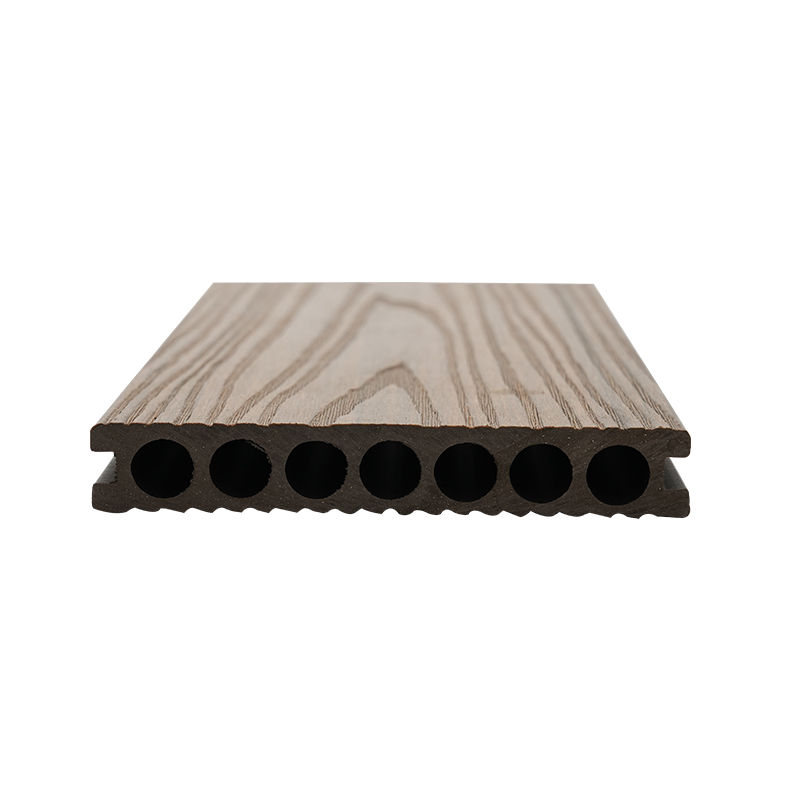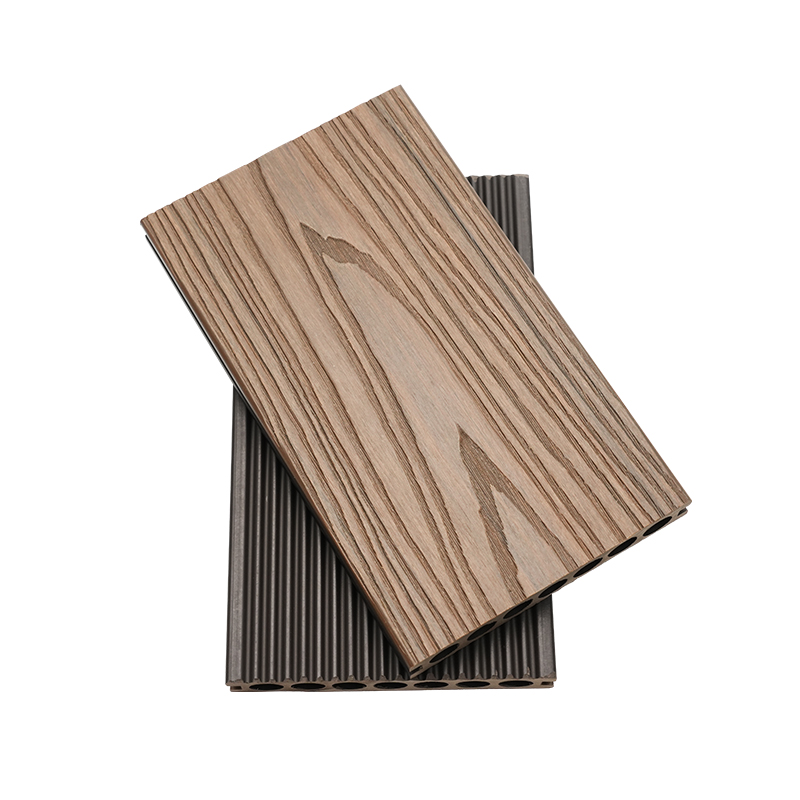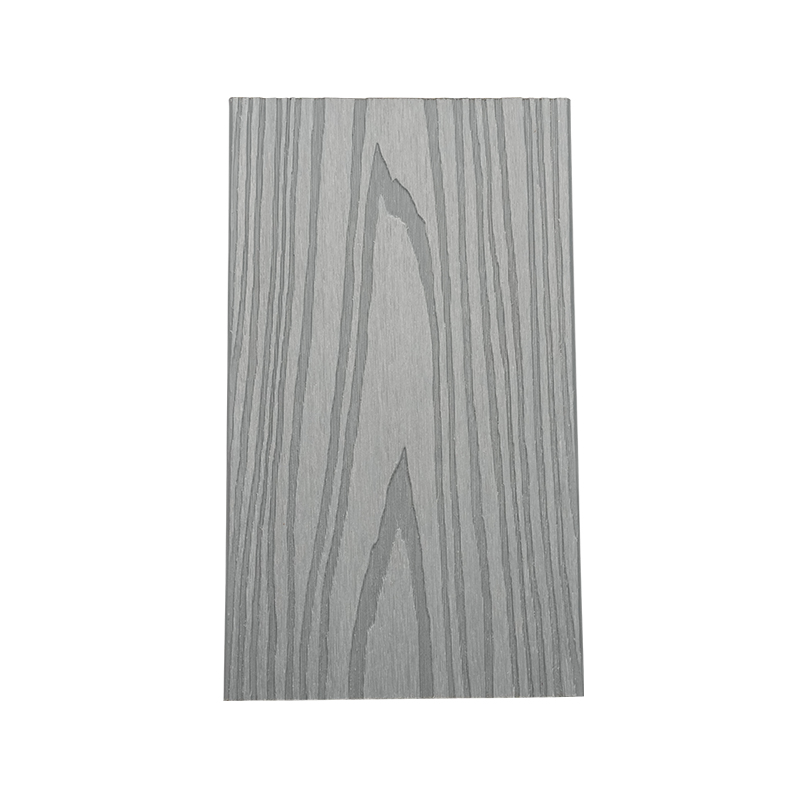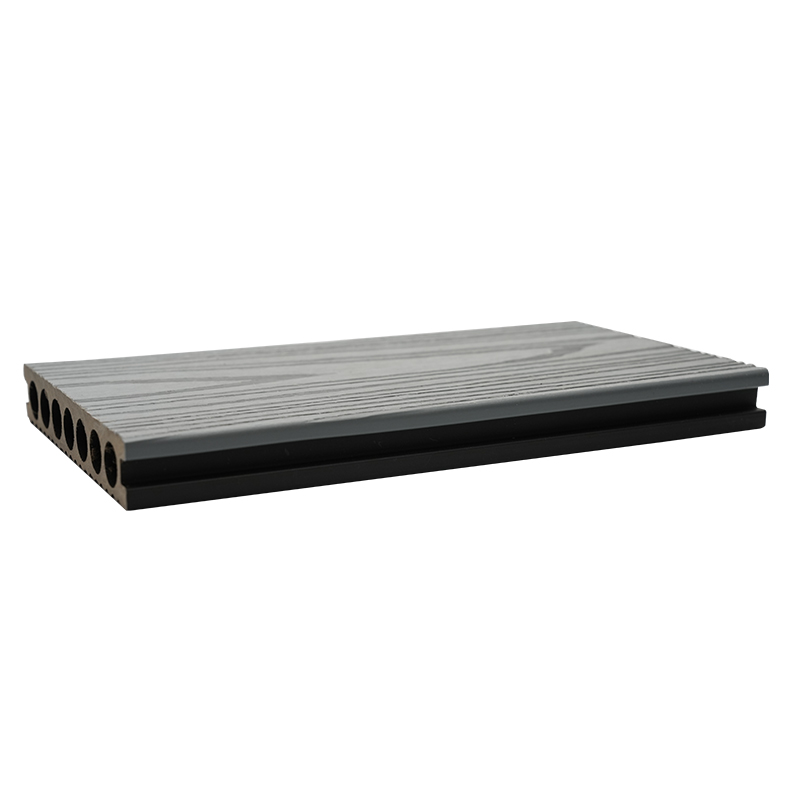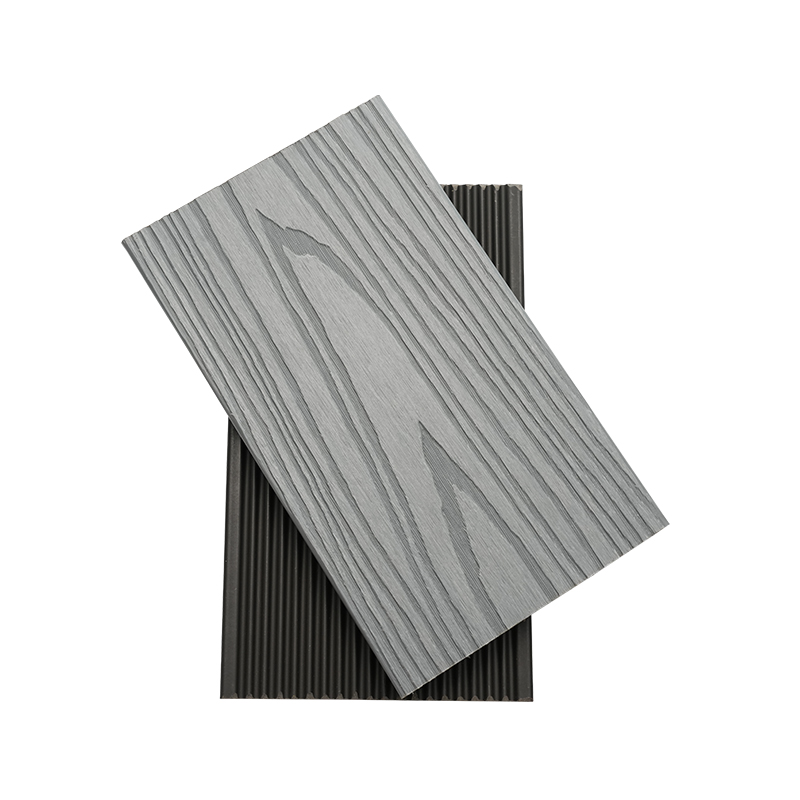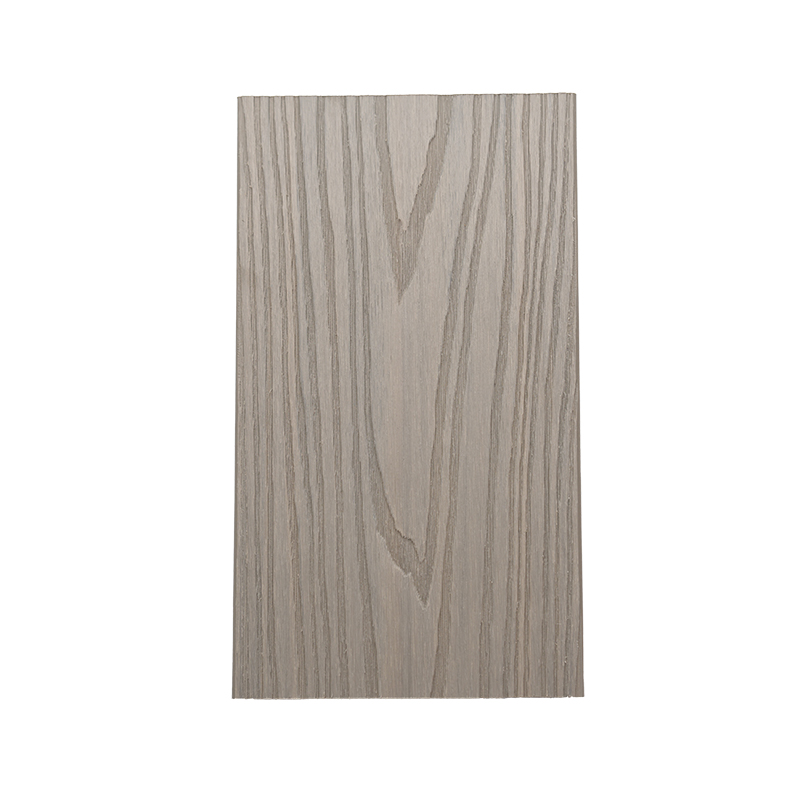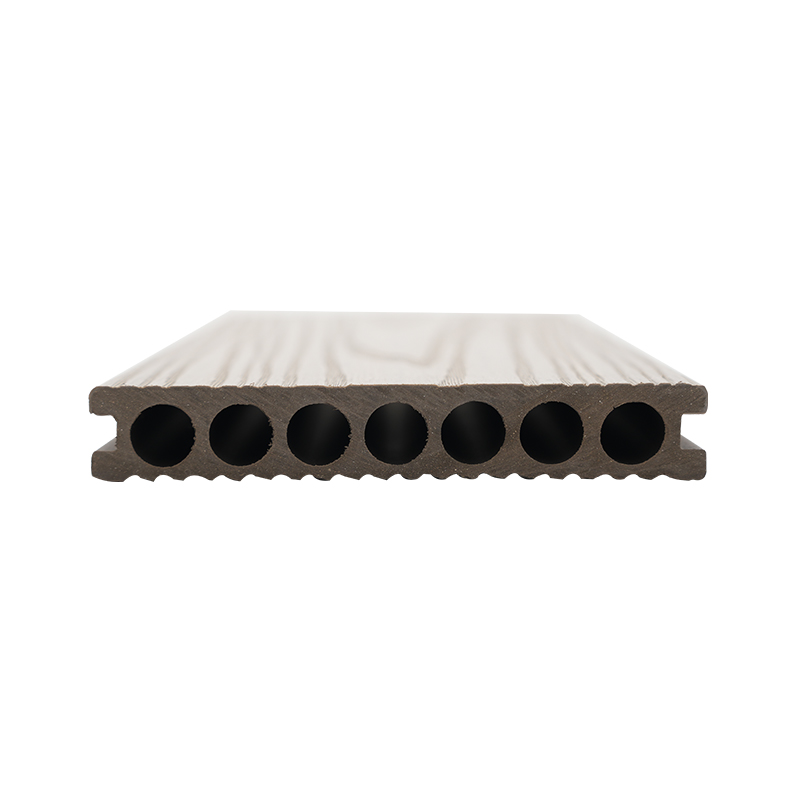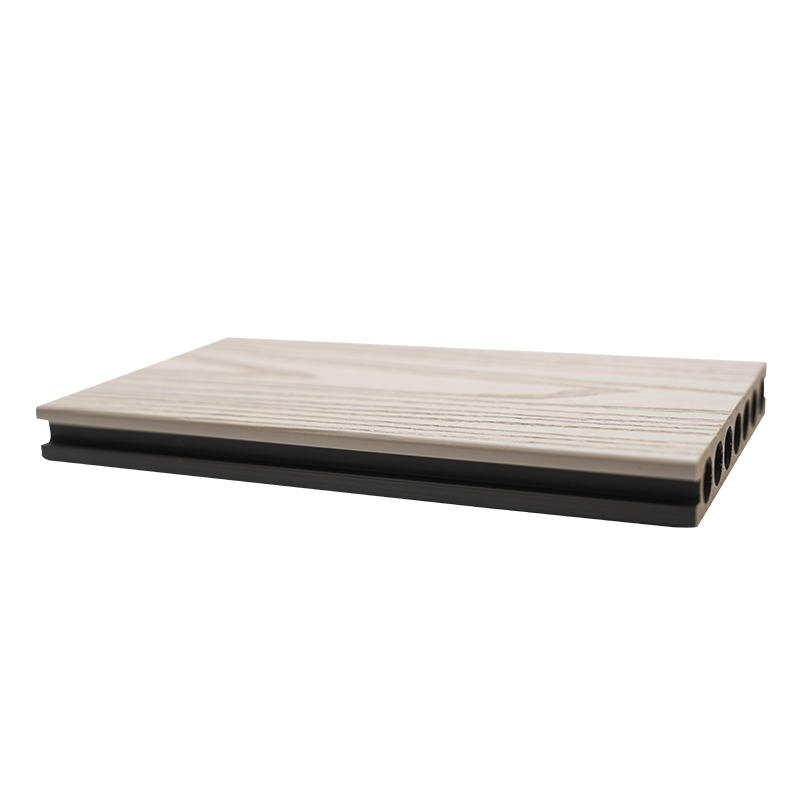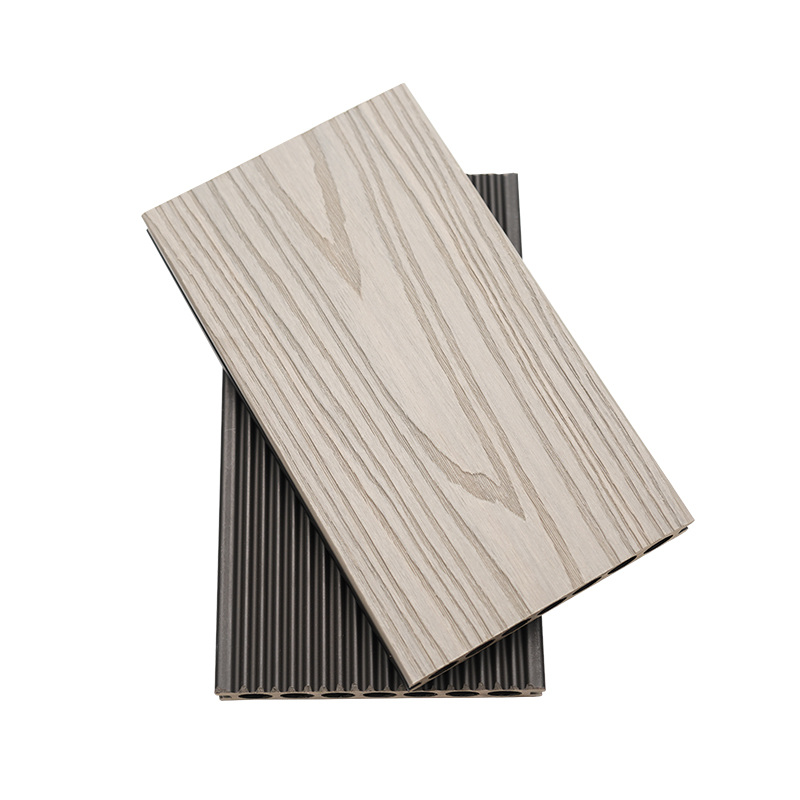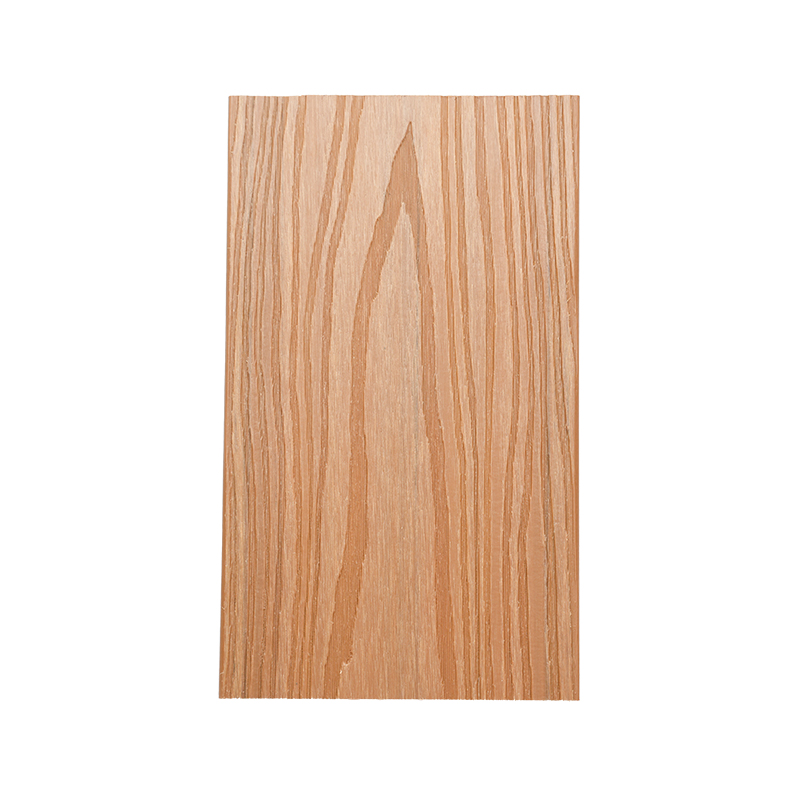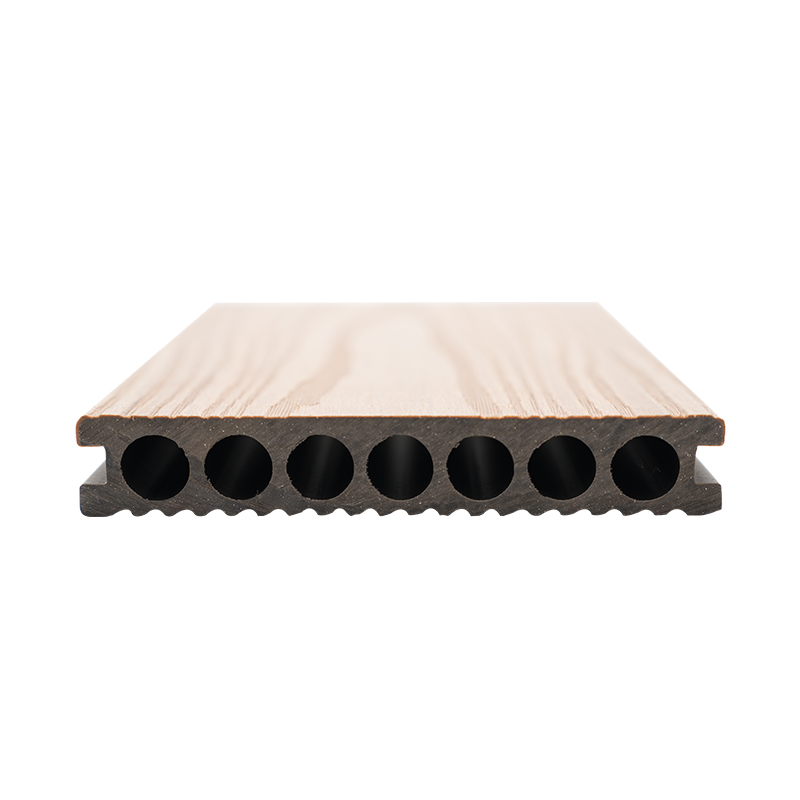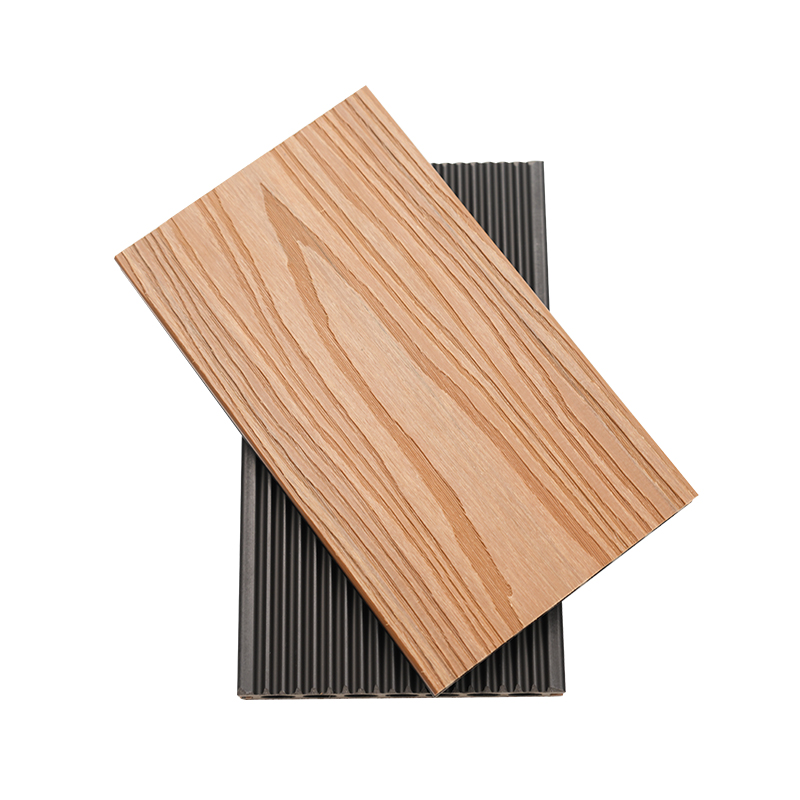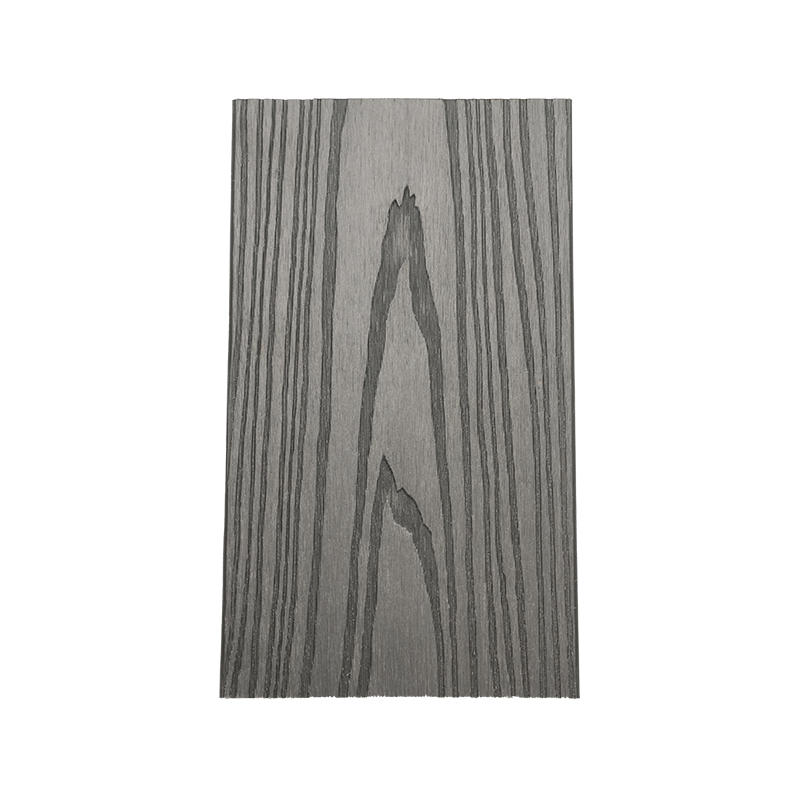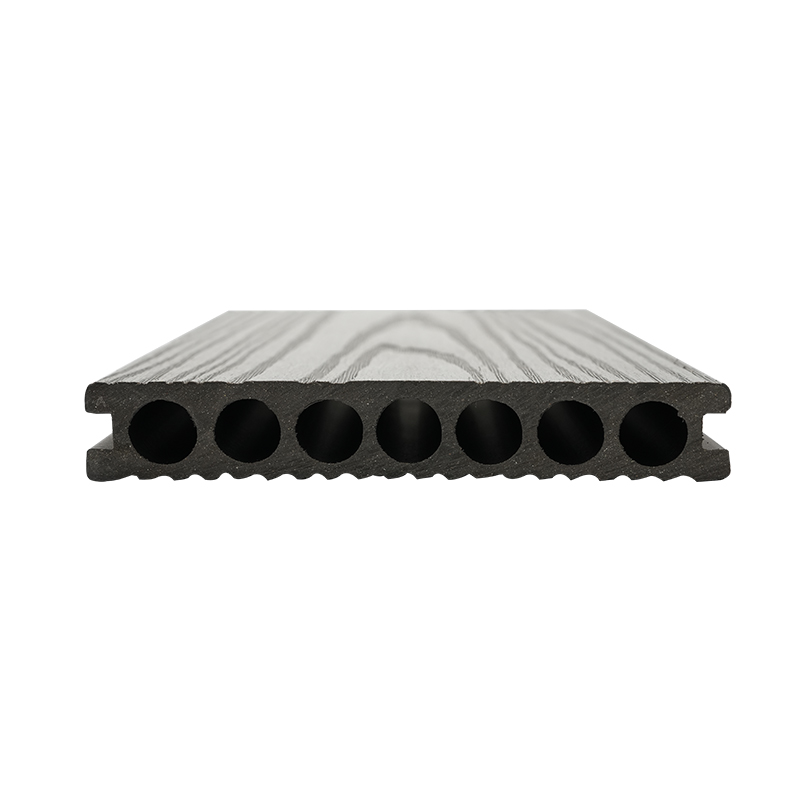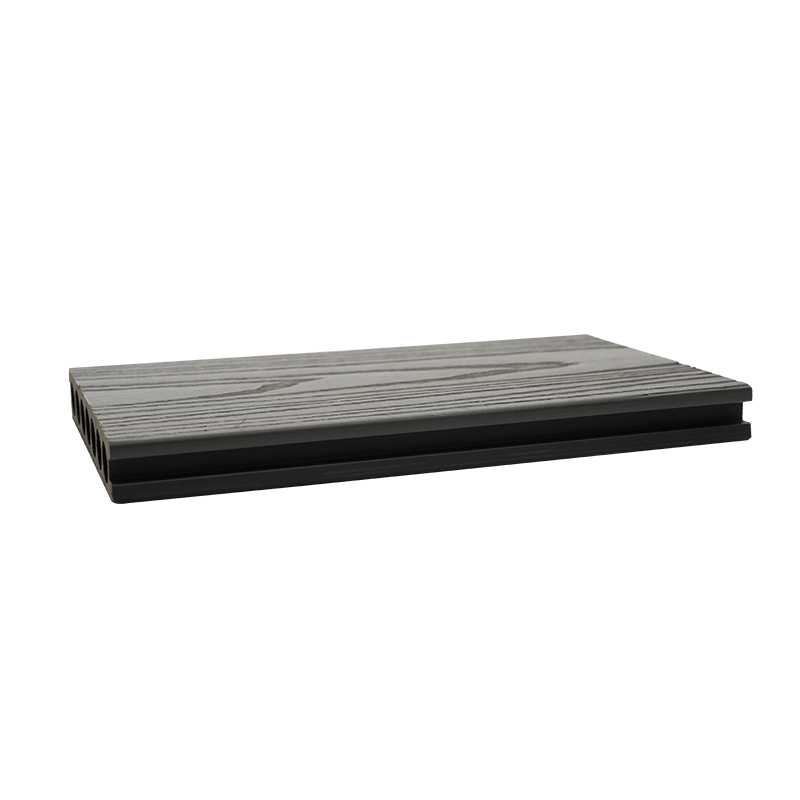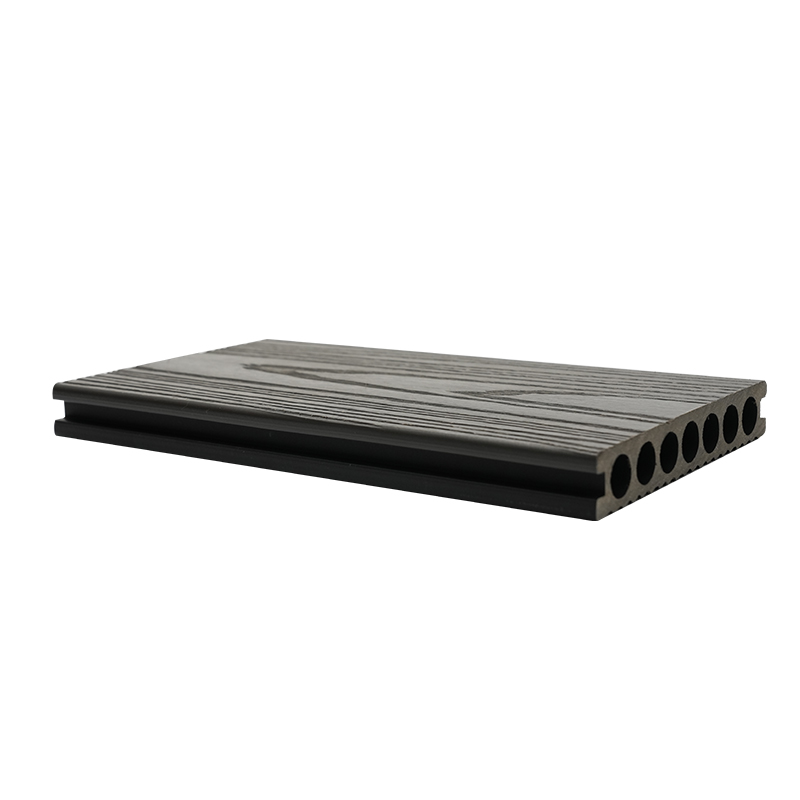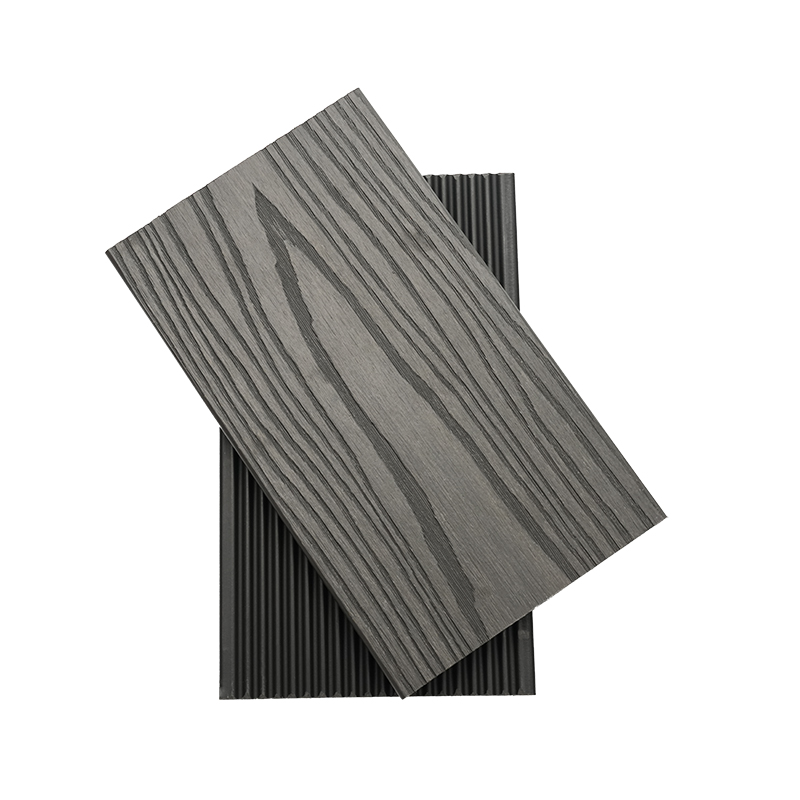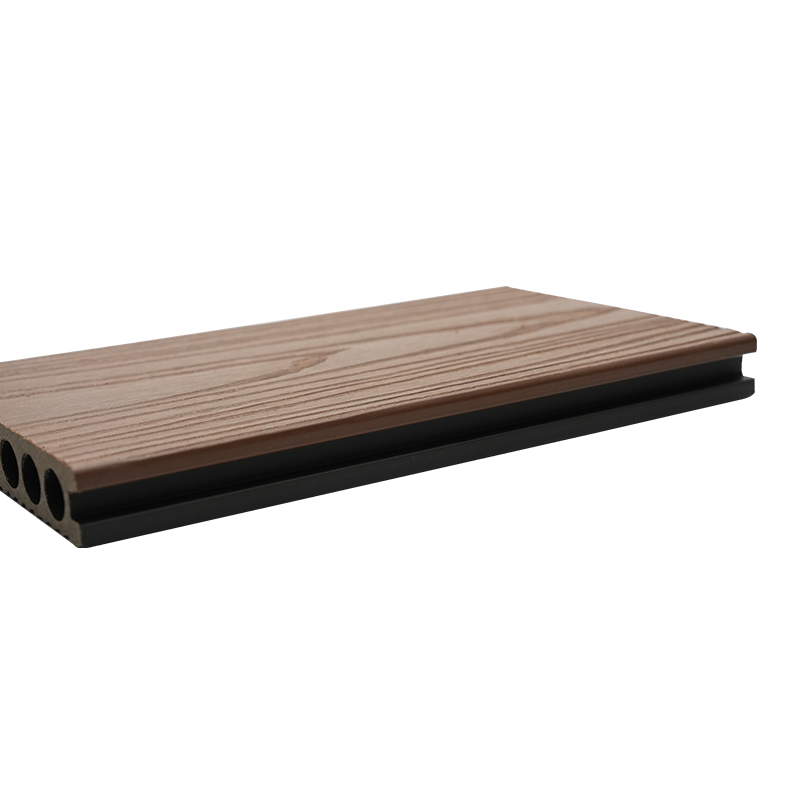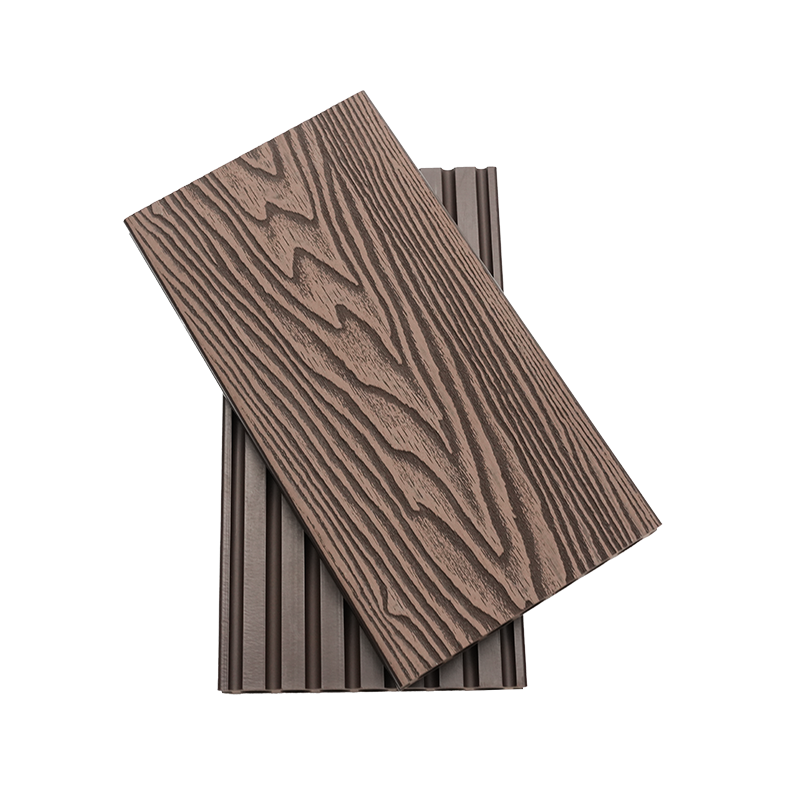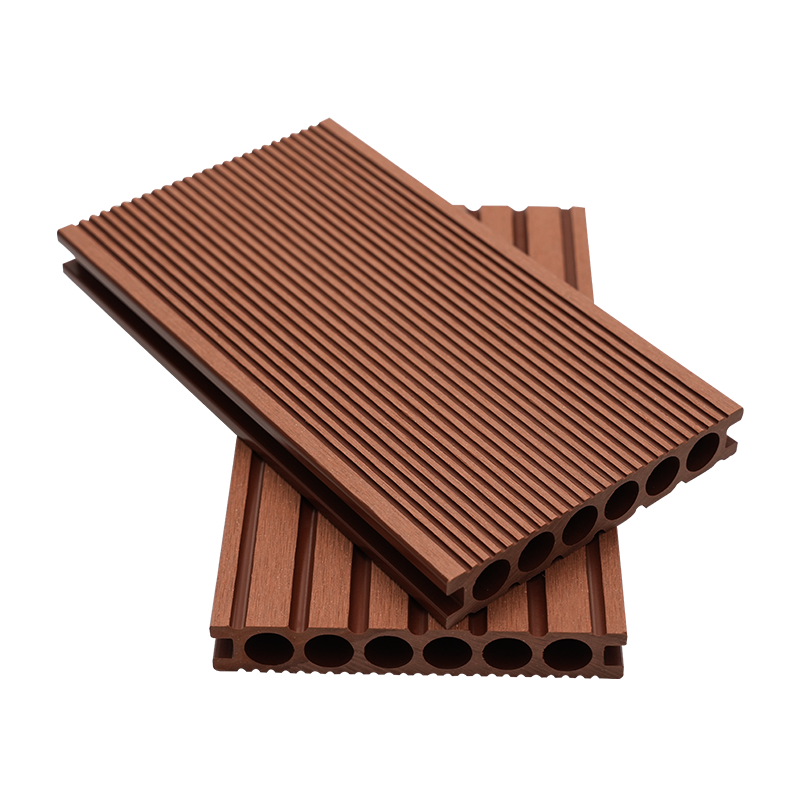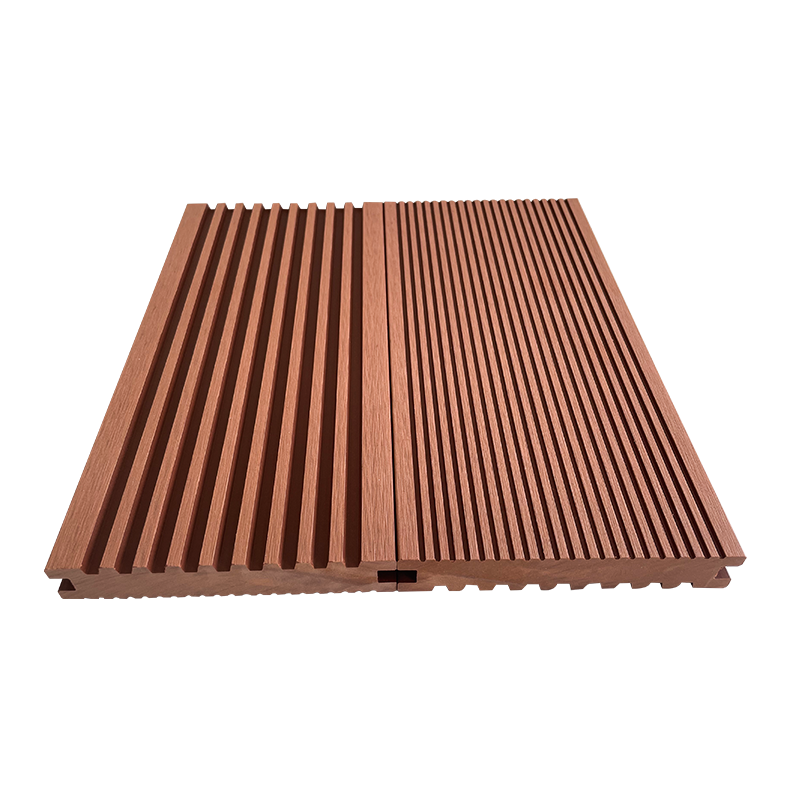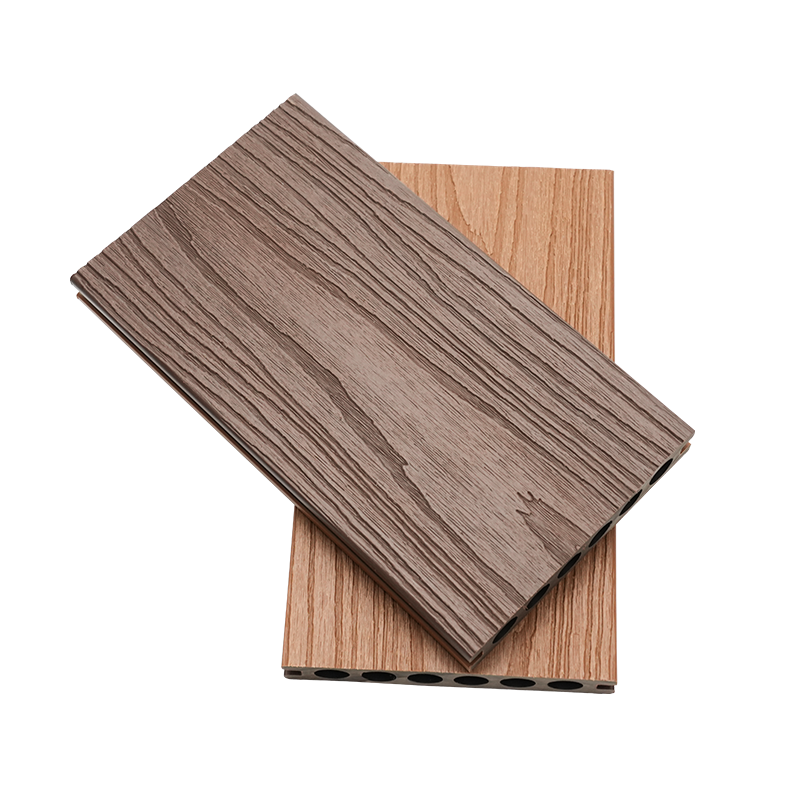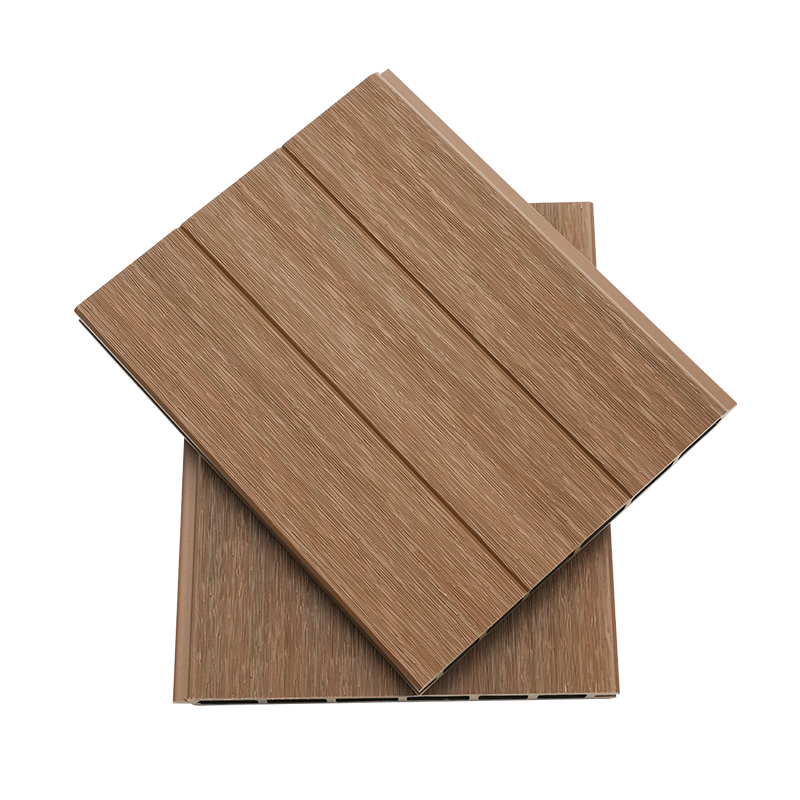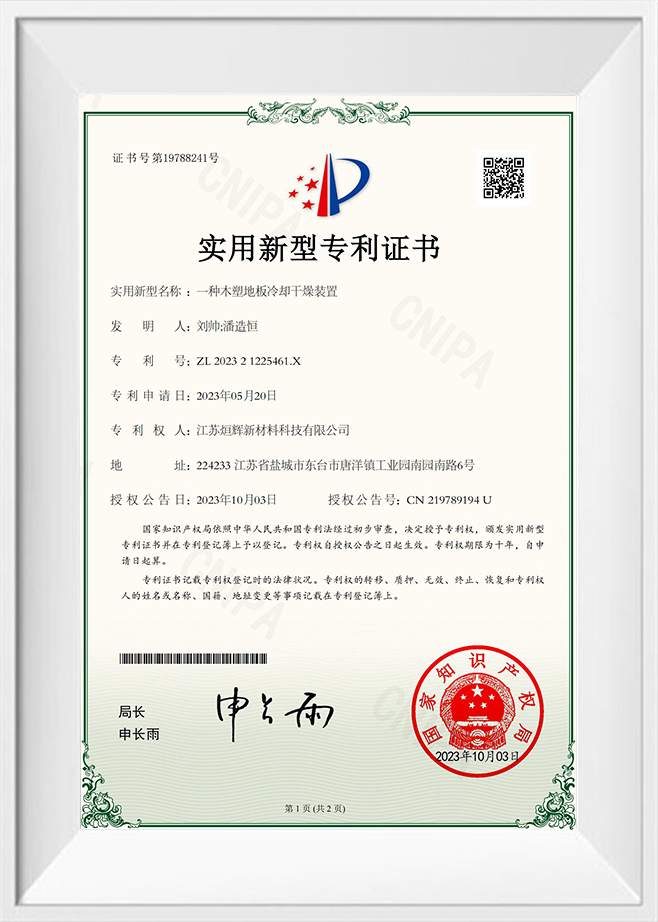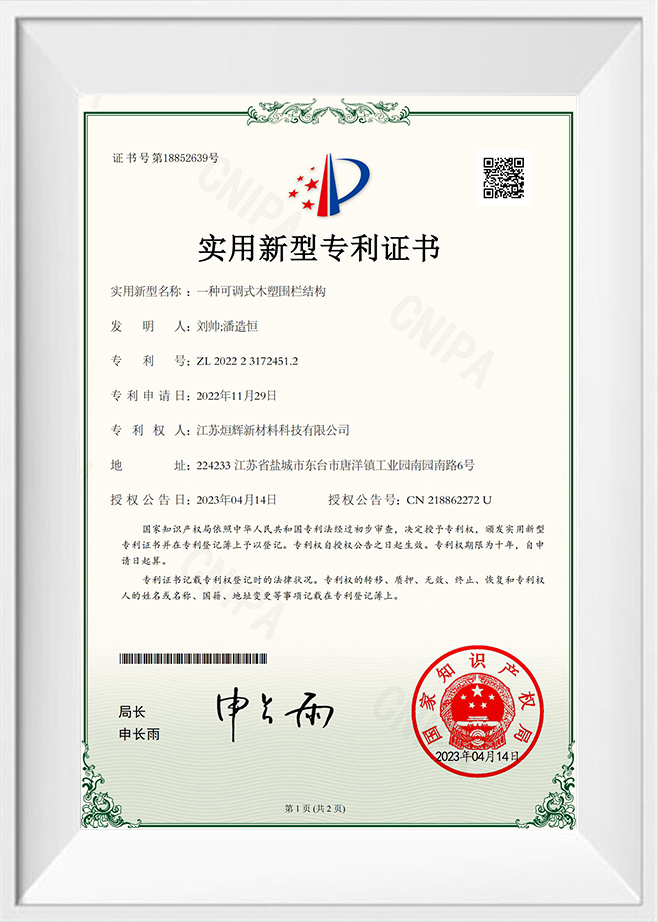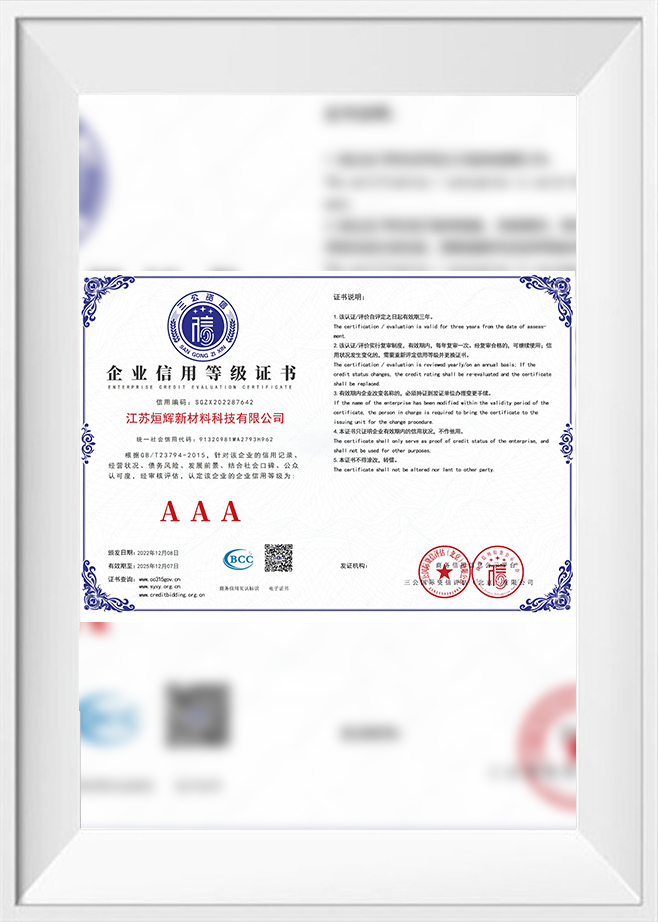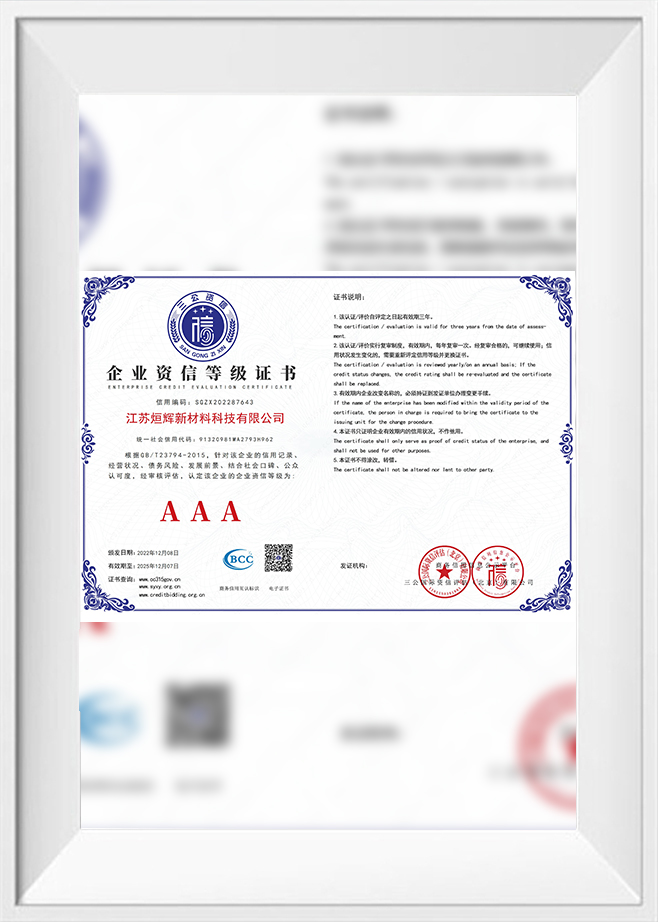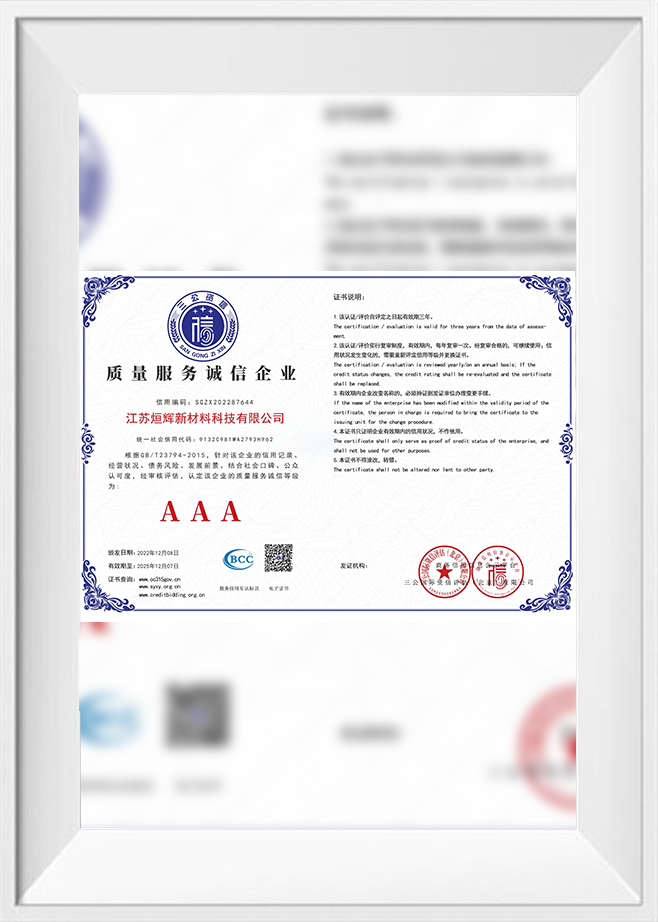Why Is Seven-Hole Embossed Single-Sided Co-Extruded Decking Becoming the New Standard for Outdoor Flooring?
Understanding Seven-Hole Embossed Single-Sided Co-Extruded Decking
It is an advanced form of wood-plastic composite (WPC) material designed for modern outdoor living spaces. Unlike traditional decking, this innovative profile integrates seven internal hollow channels and a co-extruded protective cap on one side, combined with a precisely embossed surface.
The result is a material that not only mimics the aesthetic appeal of natural wood but also surpasses it in terms of strength, water resistance, and durability. This makes it particularly suitable for patios, gardens, walkways, poolside areas, and commercial outdoor projects.
The Science Behind the Seven-Hole Structure
The seven-hole hollow design is not random—it is a carefully engineered solution to balance strength, weight, and thermal expansion.
- Load Distribution: The seven parallel hollow chambers provide structural reinforcement, ensuring that the board can support heavy loads without warping.
- Weight Optimization: Compared with solid boards, the hollow structure reduces overall weight, making installation easier without sacrificing stability.
- Thermal Regulation: The hollow channels minimize heat accumulation, ensuring the decking surface remains comfortable under direct sunlight.
- Reduced Material Use: By optimizing internal geometry, material consumption is lowered, making the product more resource-efficient and environmentally friendly.
This structural engineering enables the decking to perform effectively in both residential and high-traffic commercial environments.
Single-Sided Co-Extrusion: Advanced Surface Protection
The term single-sided co-extrusion refers to the application of a protective polymer cap layer on one surface of the decking. This co-extruded cap is tightly bonded to the WPC core during manufacturing, ensuring long-term surface stability.
Key benefits include:
- Enhanced Weather Resistance: The cap layer shields the inner composite from UV rays, moisture, and oxidation.
- Scratch and Stain Resistance: The harder polymer shell prevents surface damage and maintains aesthetics over time.
- Color Stability: Co-extrusion reduces fading, ensuring consistent color even after years of outdoor exposure.
- Minimal Maintenance: Unlike natural wood that requires staining or sealing, capped decking needs only occasional cleaning.
By applying the co-extrusion on a single side, the design maintains cost-effectiveness while focusing durability on the exposed surface.
Embossed Texture: The Role of Surface Engineering
The embossed surface of seven-hole single-sided co-extruded decking is more than just a decorative feature. Surface engineering plays a vital role in functionality:
- Realistic Wood Grain: Embossing creates a natural wood-like texture, enhancing visual appeal.
- Slip Resistance: Textured patterns increase traction, improving safety in wet environments such as poolside decks.
- Wear Resistance: Surface embossing reduces the visibility of minor scratches.
- Tactile Comfort: The grain provides a natural, pleasant feel underfoot.
This combination of aesthetics and performance makes embossed decking a preferred choice for homeowners and architects.
Environmental Advantages of Seven-Hole Embossed Single-Sided Co-Extruded Decking
One of the strongest arguments for this type of decking lies in its environmental benefits:
- Material Efficiency: The hollow-core design reduces plastic and wood fiber usage.
- Recycled Components: Many decking products incorporate recycled plastics and reclaimed wood fibers.
- Long Service Life: Durability reduces waste by extending replacement cycles.
- Recyclability: At the end of its use, the boards can be reprocessed into new composite products.
This positions seven-hole embossed decking as a sustainable alternative to tropical hardwoods, which often require deforestation.
Applications in Outdoor Living and Architecture
Thanks to its engineering advantages, seven-hole embossed single-sided co-extruded decking is widely applied across various sectors:
- Residential Use: Patios, balconies, terraces, and gardens.
- Recreational Areas: Pool surroundings, playgrounds, and resort walkways.
- Public Infrastructure: Parks, pedestrian bridges, and boardwalks.
- Commercial Projects: Outdoor restaurants, hotels, and urban plazas.
These diverse applications demonstrate how the decking addresses both aesthetic demands and functional requirements in modern construction.
Challenges and Innovations in the Industry
Despite its advantages, continuous research seeks to improve this decking type further:
- Thermal Expansion Control: Research focuses on additives to minimize expansion and contraction.
- Fire Resistance: Meeting stricter safety codes through advanced formulations.
- Surface Longevity: Enhancing cap layer durability against extreme climates.
- Color Diversity: Expanding natural hues and customized finishes to meet design trends.
Industry Outlook and the Role of Innovators
Global demand for sustainable, durable outdoor flooring continues to rise. Seven-hole embossed single-sided co-extruded decking is expected to dominate future markets due to its unique blend of performance and eco-friendliness.
In this development process, research-driven companies play a critical role. For example, Jiangsu Xuanhui New Material Technology Co., Ltd. has contributed to advancing co-extrusion technology and exploring sustainable composite formulations. Such industrial efforts highlight how innovation strengthens the balance between environmental responsibility and material performance.
Conclusion: A Path Toward Smarter Outdoor Design
Seven-hole embossed single-sided co-extruded decking represents a convergence of engineering, design, and sustainability. With its carefully optimized structure, protective surface technology, and realistic aesthetics, it provides an outdoor flooring solution that meets modern expectations of durability and eco-consciousness.
As the industry evolves, this type of decking will continue to set new standards for safe, sustainable, and visually appealing outdoor living spaces.


 English
English Español
Español عربى
عربى


